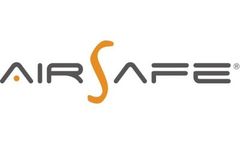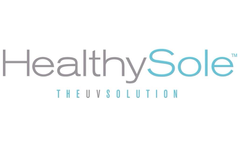Hospital Acquired Infections Articles & Analysis: Older
20 articles found
Welcome to 2023-2024 season’s respiratory surveillance recap, where we’ll share insights from the most recent respiratory surveillance season, covering three major respiratory viruses: COVID-19, influenza, and RSV. Tracking these illnesses is imperative for maintaining population health because these illnesses significantly impact individual wellbeing and healthcare costs, resource ...
Each wound tells a unique life story, whether it's from a sudden accident or a chronic condition. Wound care is important, especially for the elderly. Giving them only love and care is far from enough, but you also need to learn how to effectively manage different types of wounds. In this article, we will discuss the best senior wound care solutions, quality senior care products, and provide ...
Klebsiella pneumoniae is a significant causative agent of hospital- and community-acquired infections, presenting with various clinical manifestations. ...
Rehabilitation of Anneleen, 26 years Sporty woman Hospitalisation after SARS-CoV-2 infection Cognitive difficulties (memory impairment) A few months ago, Anneleen ended up in hospital with a COVID infection. Due to her extreme and persistent shortness of breath, she stayed in the Respiratory Department for several weeks. During her stay in hospital, she fortunately did not have to be ...
Airsafe medical aerosol high-flow suction system protect patients and healthcare operators in each phase of Covid-19 pandemic. It is in everyday situations that aerosol suction systems prove to be fundamental to keep spread of infection under control. Daily situations like vaccination: central stage in the fight against pandemic. As a fact, healthcare operators take the risk of exposure every ...
ByAirsafe
As countries worldwide start relaxing rules and lifting coronavirus restrictions, including wearing face masks in public, people with a weakened immune system may still need to protect themselves against airborne viruses and benefit from cleaner, purified air. ...
What is a Hospital Acquired Infection? A Hospital-Acquired Infection (HAI) (also know as a Healthcare-Associated Infection (HCAI) or nosocomial infection) is defined by WHO as ‘an infection acquired in ...
As a professor in infectious disease and microbiology, epidemiologist, and Medical Director of Infection Prevention and Control at Stanford Health Care, Dr. Lucy S. Tompkins was skeptical that a 0% blood culture contamination rate could be achieved, especially in a major academic medical center. ...
On January 8, 2022, Bloomberg reported that Leondios Kostrikis, a professor of biological sciences at the University of Cyprus, and his team had discovered a new variant of SARS-CoV-2, named "Deltacron" because it has an Omicron-like genetic signature in the Delta genome. Deltacron, according to Kostrikis, mixes genes from Delta and Omicron and may have come from patients who had both Delta and ...
Thus, hospitals have taken a wide range of strategic infection protocol steps to curb the spread of the disease, including HVAC systems with germicidal UVC light systems and rooms with negative air pressure for isolation of patients. ...
Developing and manufacturing molecular diagnostics platforms and test kits for detecting human pathogens. Specializing in Antimicrobial Resistance Management and Hospital Associated Infections (HAIs), by reliable, cost-effective molecular diagnostic solutions for detecting Gastrointestinal Infections including most clinically relevant bacteria, parasites, viruses and antibiotic resistances. ...
The advantage of these products is their well-documented ability to protest healthcare personnel from patients’ bodily fluids and blood; they are also dependably sterile.Many people in healthcare facilities end up acquiring Hospital Acquired Infections, or nosocomial infections, every year; these sometimes ...
Hygiene is drummed into us from a young age. It usually starts with the more unsavoury lessons – like don’t pick your nose – and gradually migrates to the importance of showers, deodorant and good sexual health. It’s only when some of us dedicate themselves to caring for others do we fully appreciate how important hygiene is. In a good hospital robust infection control ...
ByDDC
In last October’s newsletter, Sterlitech announced the availability of kits for performing the Kato-Katz analysis technique for Soil-Transmitted Helminthiasis (STH) in field-based applications, signifying the first time that these kits were available from a source in the United States. Prior to this, the efforts of research groups and health organizations could be hampered by limited ...
Water is the main stimulus for the development of microorganisms, and its flow has an important role in the spreading of contaminants. In hospitals, the water distribution system requires special attention since it can be a source of pathogens, including those in the form of biofilms often correlated with resistance of microorganisms to various treatments. In this paper, information relevant ...
Hospital infection control requires recourse to a good quality equipment that not only removes dirt but also eliminates molds, bedbugs, allergens, and germs. Healthcare services are grappling the problem of maintaining sanitization on a daily basis, and one of the most useful tools in this regard is a dry vapor system. A dry vapor system built for hospital infection control should have the ...
Patient care is a concerning issue representing the nosocomial infection transmission especially hospital-acquired pneumonia (HAP). This study aims to identify the percentage statistics of HAP among the hospitalised patients of general ward. ...
Methicillin-resistant Staphylococcus aureus (MRSA) was once largely a hospital-acquired infection, but increasingly, community-associated MRSA (CA-MRSA) is causing outbreaks among otherwise healthy people in athletic settings. Secondary school athletic trainers, student athletes, and the general student population may be at elevated risk of MRSA ...
Muskogee Community Hospital (Muskogee, OK) is using germicidal UVC (ultraviolet C) Emitters™ from Steril-Aire as part of an innovative infection control measure. The devices were installed in the air handling units and in custom-designed, ceilingmounted units in the surgical and procedural suites, marking the first time a hospital has used ...
ByE-CO
The issue of hospital acquired infections is a serious problem. According to several sources, three to four million hospital-acquired infections occur annually, with up to 80,000 fatalities. ...




















